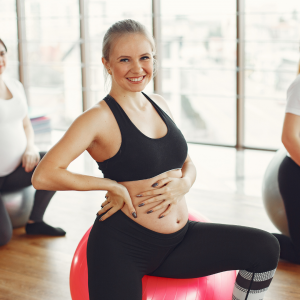How to nurture your body physically to improve fertility and pregnancy
Preconception is an important window of opportunity where we can improve the health of the baby before we welcome them to our world, and it begins with diet and lifestyle changes. If you have been following me for a while you will have an idea just how important the first thousand days of life is in shaping the long term health of a child through nutrition. However, in my 1:1 fertility consults I see many women asking, ‘if I am not pregnant is their point on working on my pelvic floor? ‘How do I prepare by body to be in the best state to conceive and carry a baby?’
As a fertility and pregnancy dietitian that also teaches women’s health pilates, let me reassure you there is a point and it can:
- Reduce the risk of pelvic floor damage and mechanical pain during pregnancy
- Continuation of exercised during pregnancy and increased mobility
- Assist returning to exercise postpartum
In my practice I work closely alongside health professionals that specialise in women’s health for fertility and pregnancy. For this reason I have chosen the wonderful Courtenay Polockfounder of HER Exercise Physiology, a Women’s Health Accredited Exercise Physiologist specialising in exercise prescription for pre-conception, pregnancy, postpartum and pelvic health. Courtenay helps women with conditions such as pelvic floor dysfunction, prolapse and Diastasis Recti. Courtenay shares her tips on:
- How to prepare your body physically for pregnancy whilst trying to conceive
- Easy exercises to strengthen your core and pelvic floor from the comfort of your home
- How to navigate common pregnancy pain points such as pelvic gridle pain.
Watch our live here: https://www.instagram.com/p/CVJ2uhFjECl/

Tips for women trying to conceive: what can I be doing now to prepare my body and pelvic floor for pregnancy?
- Build strength to carry your body through the changes that occur during pregnancy. Incorporate lots of exercise that strengthen your back, glutes, legs and core
- Understand how the core and pelvic floor work and how to keep this safe during exercise when pregnant.
- Do not do hundreds of kegels thinking it will help because you can often end up with what we call a hypertonic pelvic floor which means it doesn’t know how to relax, which not only contributes to pelvic pain but can also become an issue during birth. The pelvic floor needs to relax and move out of the way during birth so you can imagine a tight pelvic floor will not allow for the baby to move down the vaginal canal and into the world if the pelvic floor is too tight!
Easy exercises to strengthen your core and pelvic floor at home postpartum and how often do you need to do them to see improvements?
- Pelvic floor symptoms can present very similarly and actually be coming from different problems e.g. pelvic floor weakness/looseness or tightness, poor control of abdominal muscles, poor pressure management strategies
- Making sure you get more individualized prescription based on an assessment is important for this reason
- If getting help is not accessible for you try 2-3 sets of 10 kegels making sure you exhale on the engagement is a good place to start BUT if you notice symptoms get worse from doing this then I’d be more inclined to say your pelvic floor is tight and you feel like you can’t contract because it’s already fully contracted.
- You should see improvements between 2-6 weeks however there is so much limitation to only doing kegels and you also need to be looking at posture/alignment, deep abdominal work and also building strength in other muscles around the pelvis

Is there long term damage from Pelvic Girdle Pain? Should we be avoiding any particular exercises postpartum?
- The pain you experience comes from the joints becoming less stable as a result of hormones present during pregnancy. Post partum depending on breastfeeding status(those hormones will hang around) and the pelvic pain can also linger. I would expect to see that pain reduce once breastfeeding/pumping has stopped. You may still have irritation but this would be coming from poor muscular balance around the pelvis which can be fixed through retraining muscle patterns and strength.
If you are experiencing pelvic girdle pain reduce any exercise that is:
- Single leg or where feet are not next to each other (step ups, lunges, bike riding, walking with a big stride etc)
- Keep your legs close together during exercise and daily activities
- Focus on glute strengthening exercises and pelvic stability exercises to reduce the load on the joints that are in pain.
Do you want to get in the best state to conceive? Optimise your nutrition for preconception and pregnancy book your Nutrition Assessment:
One on One Fertility Assessment – Lora Attia (dietitianformums.com.au)
Follow me
Instagram: Dietitian & Fitness For Mums (@dietitianformums) • Instagram photos and videos
Facebook: Lora Attia – Dietitian & Fitness For Mums – Home | Facebook
Want to optimise your physical health for pregnancy and postpartum
Connect with Courtenay
Instagram Handle: @her.exercise.physiology
Website: www.herexercisephysiology.com.au
YouTube Channel: HER Exercise Physiology – HER Exercise Physiology – YouTube




